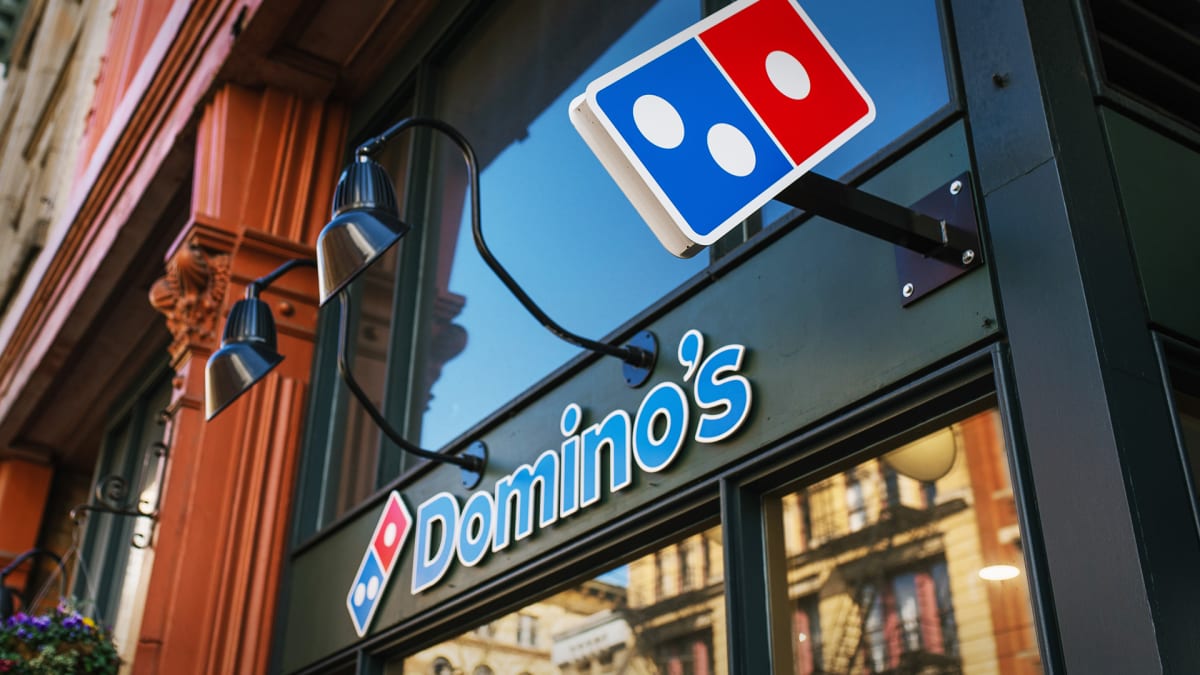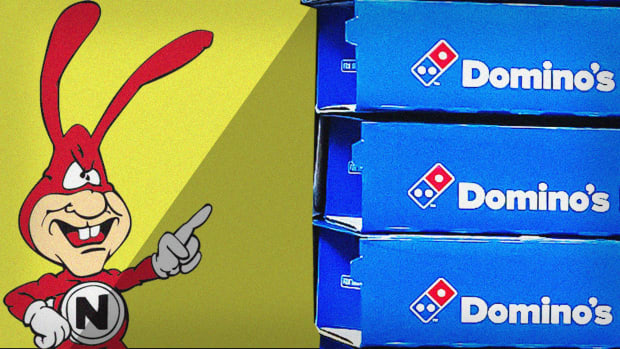
Domino's knew where the fast-food business was going well ahead of its peers.
The world's largest pizza company has always understood that for its customers, convenience and value matter more than anything else. And that's why it has been a consistent leader in the restaurant space.
While Starbucks (SBUX) often gets credited for its digital-app development creating a standard that pretty much every restaurant has to follow, you could argue that Domino's (DPZ) was the true pioneer. The pizza company has long focused on making it as easy as possible for customers to get its product.
DON"T MISS: Burger King Menu Adds a Side Dish McDonald's Can't Copy
When McDonald's (MCD) and other rivals had not even launched an app, Domino's was making major innovations in its digital operations. That has included not just making it easy to order and pay via digital methods, but also focusing on simplifying production.
Those are lessons that just about every other restaurant chain, aside from perhaps Starbucks, learned the hard way during the pandemic. That's why McDonald's dropped all-day breakfast and Yum Brands (YUM) Taco Bell slimmed down its menu.
Domino's has long understood that people want familiar, decent food quickly at a good value. That's why the company hasn't focused on having the best pizza and has instead spent its money on improving its operations and making its app the core of its business.
The pizza chain has also invested heavily in having its own delivery drivers. While nearly very other restaurant uses third-party delivery like Uber (UBER) and DoorDash (DASH), Domino's has always used its own drivers.
That seemed like something the company would never give up, but that may not be the case, according to remarks made by Chief Financial Officer Sandeep Reddy at the Oppenheimer Consumer Growth and E-Commerce Conference on June 14.

Image source: Domino's/Shutterstock/TheStreet
Domino's Has Pushed Away From Delivery
Delivery is expensive and labor-intensive. When gas prices were near their peak and the labor market was at its weakest, Domino's ran ads that offered to "tip" customers who picked up their orders at the chain's stores. The company realized that it was cheaper to give customers a discount on their next orders than it was to send drivers to deliver their orders.
This fits with the company's overall model, where it works to give customers incentives to make company-friendly choices. Domino's also offers lower prices and some deals that require customers to order through its app, which costs the company less money to fulfill.
Domino's does use third-party delivery in parts of the world outside the U.S. Its chief executives have always adamantly opposed this in the U.S. -- but Reddy made clear that the situation may change.
“For us, it’s a very simple calculation, a simple evaluation process,” he said. “We just look at what is the incrementality of a potential partnership, weighed against the potential risk of customers who are on our platform switching out of our platforms into an aggregated platform.
"And if we see that on a long-term basis the incrementality of the opportunities is greater than the risk, then that calculus leads us to actually partnering with a third-party aggregator.”
The concern isn't losing control of the delivery; it's driving customers to a platform filled with other food choices. The company must weigh that real risk against the cost of hiring delivery drivers and the problems some locations have had finding people willing to take the jobs as drivers.
“It’s really simple. We get to the point where if the long-term benefit is greater, we sign up. If we get to the point where we say the risk is much greater versus the long-term benefit, we don’t. And it’s like that,” he said.
Action Alerts PLUS offers expert portfolio guidance to help you make informed investing decisions. Sign up now.







